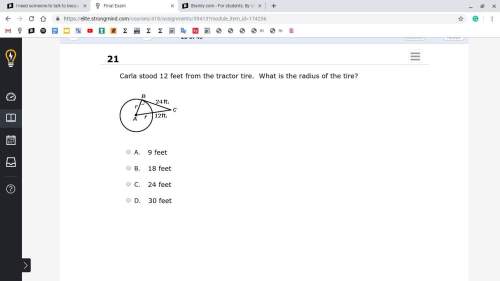
Mathematics, 24.06.2019 03:30 dinecree
Discussion topic earlier in this course, you explored euclidean geometry, which is the study of flat space. this approach follows the teachings of euclid, in which he describes the relationships between points, lines, and planes without any numerical measurement. you saw evidence of euclidean geometry inside several proofs and geometric constructions. in contrast, the focus of this unit is understanding geometry using positions of points in a cartesian coordinate system. the study of the relationship between algebra and geometry was pioneered by the french mathematician and philosopher rené descartes. in fact, the cartesian coordinate system is named after him. the study of geometry that uses coordinates in this manner is called analytical geometry. it’s clear that this course teaches a combination of analytical and euclidean geometry. based on your experiences so far, which approach to geometry do you prefer? why? which approach is easier to extend beyond two dimensions? what are some situations in which one approach to geometry would prove more beneficial than the other? describe the situation and why you think analytical or euclidean geometry is more applicable.

Answers: 3


Another question on Mathematics

Mathematics, 22.06.2019 00:00
Cd is the perpendicular bisector of both xy and st, and cy=20. find xy.
Answers: 1

Mathematics, 22.06.2019 02:00
Part a what is the area of triangle i? show your calculation. part b triangles i and ii are congruent (of the same size and shape). what is the total area of triangles i and ii? show your calculation. part c what is the area of rectangle i? show your calculation. part d what is the area of rectangle ii? show your calculation. part e rectangles i and iii have the same size and shape. what is the total area of rectangles i and iii? show your calculation. part f what is the total area of all the rectangles? show your calculation. part g what areas do you need to know to find the surface area of the prism? part h what is the surface area of the prism? show your calculation. part i read this statement: “if you multiply the area of one rectangle in the figure by 3, you’ll get the total area of the rectangles.” is this statement true or false? why? part j read this statement: “if you multiply the area of one triangle in the figure by 2, you’ll get the total area of the triangles.” is this statement true or false? why?
Answers: 1

Mathematics, 22.06.2019 04:00
Find the x-intercepts for the parabola defined by this equation: y=-3x^2-6x+9
Answers: 1

Mathematics, 22.06.2019 04:00
Which elements in the set are integers? –8, 3⁄4, √ 18 , 0, √ 16 , 5, –2⁄7, 6 a. –8, 0, 5, 6 b. –8, 0, √ 16 , 5, 6 c. 3⁄4, √ 18 , √ 16 , 5, –2⁄7 d. –8, 0, √ 18 , 5, 6
Answers: 1
You know the right answer?
Discussion topic earlier in this course, you explored euclidean geometry, which is the study of fla...
Questions

Computers and Technology, 24.10.2019 14:43


Mathematics, 24.10.2019 14:43


Mathematics, 24.10.2019 14:43

Biology, 24.10.2019 14:43

Spanish, 24.10.2019 14:43

History, 24.10.2019 14:43



Arts, 24.10.2019 14:43




Mathematics, 24.10.2019 14:43

English, 24.10.2019 14:43




Mathematics, 24.10.2019 14:43




